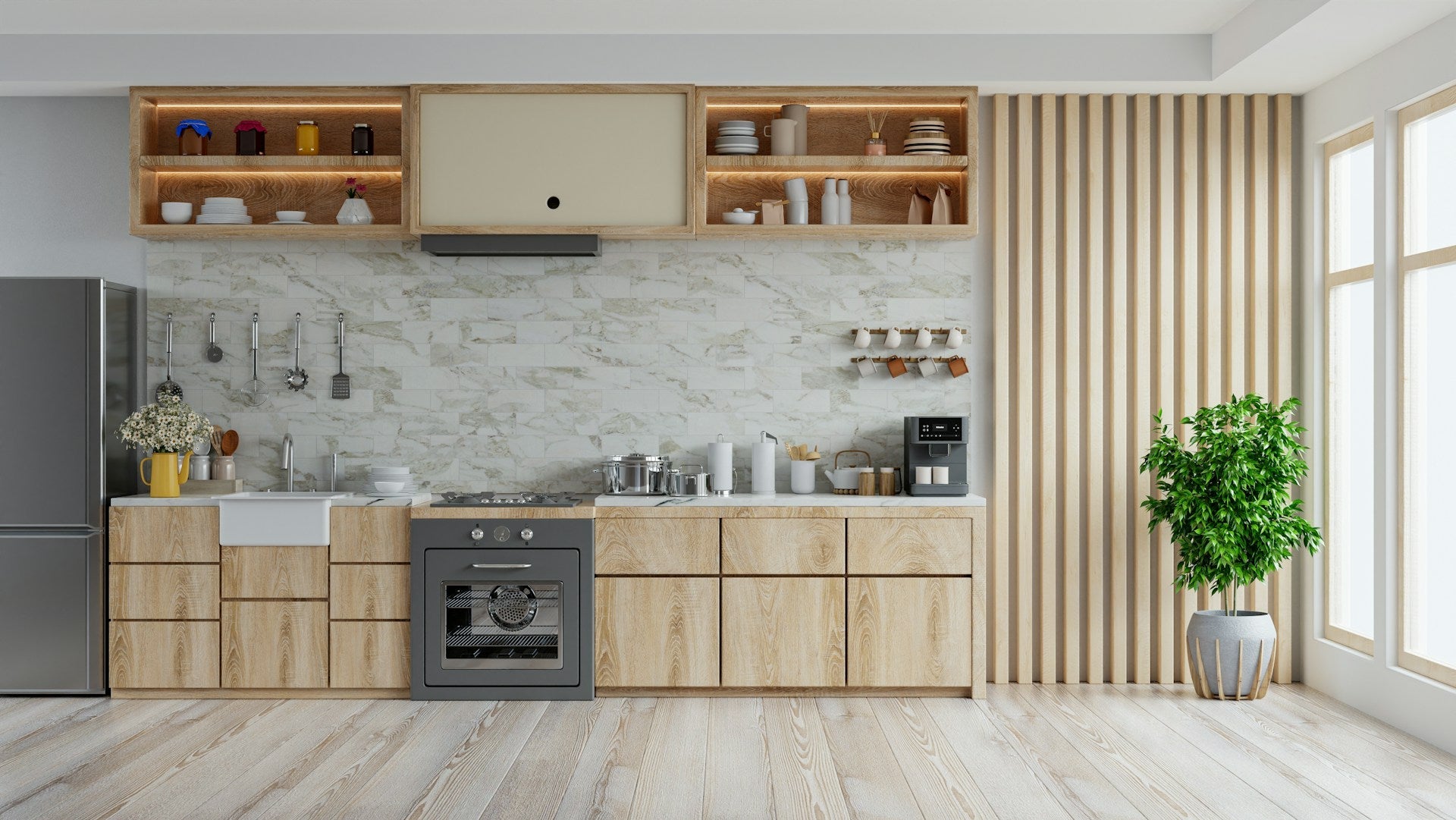A strong floating shelf can be a workhorse in the kitchen, holding everything from stacked plates to jars of dried goods. But many shelves don’t get the support they need simply because the weight is placed all wrong. It might not show the first few days or even weeks, but over time, things shift. The shelf starts to lean on one side or, worse, loosens from the wall.
Floating shelves rely on solid wood, good fasteners, and smart placement. That last part gets overlooked more than it should. How and where you place your items plays a big part in how strong and steady the shelf will be over time. It’s not just about the shelf itself. It’s about what you put on it, how often you reach for those items, and how evenly the weight spreads across the wall.
Understanding Weight Distribution
Floating shelves in the kitchen do more than just hold small decorations. They're expected to carry real weight—piles of dishes, mugs, cooking oils, or small appliances. When those things get bunched to one side or stacked without thought, the stress adds up. Over time, the shelf can sag, tilt, or even pull away from the wall.
That’s why weight distribution isn’t something to guess at. When you spread the load properly, everything works better. The brackets don’t carry too much strain in one area. The wall anchors stay firm, and the shelf stays level. But when weight leans to one side or dips in the middle, it creates pressure points. That pressure gets worse bit by bit until you notice gaps in the wall or that slow, dreaded bend.
It often starts with something small. One heavy cast iron pan resting just left of center, maybe paired with a stack of bowls at the far end. These small habits add up, especially when the shelf gets unloaded and reloaded every day. That's why understanding how to keep things balanced makes such a difference.
When a shelf is used regularly—say, for everyday mugs, cereal bowls, or spice jars—you want it to feel like a reliable spot. Making sure that the weight doesn’t shift more to one end helps protect that confidence. Think of it like packing a grocery bag. Things go smoother when the heavy stuff sits in the middle and spreads out evenly, instead of leaning against one handle.
Optimal Loading Techniques
Once you understand what goes wrong, it’s easier to set things up right from the start. The way items are placed on a kitchen shelf matters just as much as what the shelf is made of or how it’s mounted. Even with the strongest shelf, poor loading can change everything.
Keep these tips in mind when loading a kitchen floating shelf:
1. Place the heaviest items closest to where the bracket or wall support is anchored. These are usually near the center or the ends, depending on the style.
2. Center bulky items when possible, and only spread them slightly off-center if absolutely needed.
3. Save the outer edges of the shelf for light items like small cups, napkins, or decorative jars.
4. If you have open shelving across several sections, spread heavier items from shelf to shelf instead of loading everything onto one.
5. Don’t let items hang over the edge. Even a few inches can affect long-term stability.
It can help to load a shelf one layer at a time. Put the big things down first, but don’t cram them too close together. Leave space between groups of items so air can circulate and your view stays clear. After the heavy items are placed, tuck in the lighter bits.
For example, if you're setting up a floating shelf to hold your regular salad bowls, nested prep bowls, and a bottle of olive oil, start by placing the bowls near the bracket points. That’s where they’ll be most supported. Add the oil bottle closer to the center. Use the remaining side space for something simple like stacked napkins or a salt cellar.
When you spread the weight evenly from front to back and end to end, you're protecting not just the shelf, but your wall and everything below it. A well-loaded shelf doesn’t need constant checking. It just works the way it should.
Choosing The Right Mounting Hardware
Even if your shelf is loaded perfectly, it won’t stay strong for long without the right hardware holding it up. The mounting system is what connects the shelf to the wall, and it makes a big difference in how much weight your shelf can handle safely. If the wrong anchor or screw is used, sagging or even shelf failure isn’t far off.
Start by checking the kind of wall you're working with. Not every wall can carry weight the same way. Drywall has different needs than brick or concrete. For drywall installs, make sure you’re connecting directly into studs. If studs aren’t where you need them to be, high-quality wall anchors made for weight-bearing shelves are the next best choice. Plastic expansion anchors usually won’t cut it—look for heavy-duty toggle bolts or anchors rated for shelving use.
Brick or masonry walls offer a stronger base, but they still need the right tools. Masonry screws or sleeve anchors work well here. Pre-drill using a masonry bit and make sure everything sits flush before mounting the shelf. Don’t try to short-cut this with multi-surface screws or adhesives. Even if it feels secure at first, it won’t last when jars, dishes, or that spare coffee maker go up.
A good rule to follow is this: the heavier the shelf or the more you're planning to load it, the stronger your hardware needs to be. Go up a size if you’re unsure. It’s better to go a bit bigger with screws or anchors than to end up needing a repair later.
A strong shelf in the kitchen starts with dependable mounting gear. Take time to match your wall type to the proper hardware, and you won’t have to guess whether your floating shelf can hold what you need.
Regular Maintenance Checks Keep Things Safe
After you’ve mounted the shelf and arranged your kitchen items, the job’s not fully complete. Floating shelves still need a little upkeep now and then. Fortunately, it doesn’t take much—just a few quick checks every once in a while.
Here are a few ways to make sure your kitchen floating shelves stay safe and sturdy:
1. Lightly press on the front of the shelf and watch for movement or wobble. Even a slight jiggle might mean something’s come loose.
2. Look under the shelf and near mounting spots for signs of pulling or stress.
3. Check that screws haven’t started backing out or twisting.
4. Rearrange or trim down clutter if you notice one side seems heavier than the other.
5. Clean near the brackets and wall during your routine wipe-downs so changes are easier to notice.
If anything looks off, the solution may be simple—a quick tightening or moving a few things around. But waiting too long can lead to bigger issues later. A shelf that starts to sag from neglect is harder to fix after the wall has taken damage. Tidying up early is always easier than repairing drywall or rehanging brackets.
Try to make these checks part of your seasonal chores. Just like rotating tires or changing AC filters, checking your shelving once in a while helps keep things working just the way they should.
Keep Your Kitchen Floating Shelf Strong and Steady
When everything has a proper place and the space feels balanced, your kitchen feels easier to use. A strong floating shelf for the kitchen helps add more storage and cuts down on clutter. But to get the most from it, you have to set things up with care and continue to check in every so often.
Good habits at the start—spreading weight properly, using reliable hardware, and loading shelves the smart way—can make all the difference. Following up with simple maintenance tightens things up and keeps your shelf from ever getting beyond repair.
Strong materials matter, but so does your setup. With just a little bit of attention, your kitchen shelf can be both useful and reliable for years to come.
To help you keep things neat without sacrificing style, a strong floating shelf for the kitchen can handle daily use while still looking sharp. At The Mortise & The Hare, we build each shelf to bring out the natural beauty of hardwood and hold up to the demands of real kitchen life.




Share:
Repairing Scratches on Your Mahogany Wall Shelves
Solutions for Uneven Custom Floating Shelf Installation